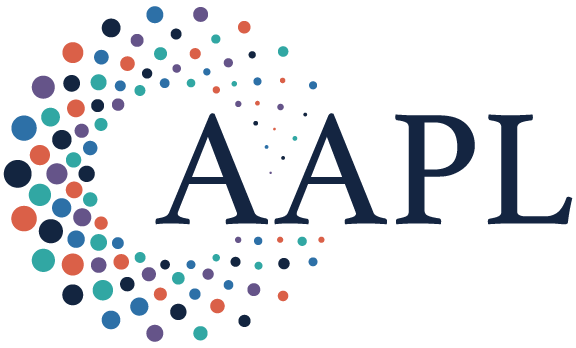Summary:
Demographic change isn’t coming—it’s here, and it’s reshaping labor markets, consumer behavior, and economic growth. Businesses that cling to youth-centric product and talent strategies alone risk missing out on one of the greatest growth opportunities of the 21st century: designing for the full life course.
For decades, companies built entire strategies around the pursuit of youth. Automakers, for example, sold independence to Baby Boomers coming of age—the Ford Mustang, Dodge’s “join the rebellion” campaigns, and Volkswagen’s Beetle all signaled that youth wasn’t just a stage of life; it was a valuable new market category.
But time moves on. Those consumers are now in their 60s and 70s. Meanwhile, fertility rates are falling worldwide, youth pipelines are shrinking, population growth is slowing or reversing in many nations, and people are living longer and working later.
A new market has emerged—defined not by age alone, but by longevity, reinvention, and the realities of multigenerational living. Businesses that cling to youth-centric product and talent strategies alone risk missing out on one of the greatest growth opportunities of the 21st century: designing for the full life course.
The Demographic Tipping Point
The numbers are stark. Globally, according to the United Nations, one in six people is now over the age of 60, and this figure is expected to double by 2050. In the United States, adults aged 65 and older are expected to outnumber children under 18 by 2034. Fertility rates have fallen below replacement level in more than 100 countries. China, Japan, Italy, and South Korea are already experiencing population decline.
As life expectancy has increased, so have the capabilities and aspirations of older adults. Today’s 60- and 70-year-olds are starting businesses, caregiving for family members, and running marathons. They’re not fringe cases—they’re the future mainstream, and they’re underrepresented in workforce planning, product design, and marketing.
Yet many companies still treat aging as a risk to be managed, not a consumer and talent opportunity to be embraced. Internal KPIs prioritize short-term wins. Leadership pipelines overlook the potential of late-career professionals. Advertising often defaults to youthful imagery or treats older adults as burdens or punchlines.
This mindset is not only outdated but also contrary to market forces. In the U.S., according to AARP, adults over 50 control nearly 70% of household wealth. Globally, they account for 42% of consumer spending. And, according to the Bureau of Labor Statistics, labor force participation among people over 65 has nearly doubled since 2000, outpacing all other age groups.
Some companies are waking up to this reality. Nike has made moves to attract older consumers, including the development of new product lines. Apple has quietly embedded inclusive features across its devices, like large-text interfaces, fall detection, and even hearing aid functionality, without singling out older users. Dove’s “Beauty never gets old” campaign features women over 60 and reframes aging as aspirational, challenging outdated beauty standards. The luxury fashion brand Jacquemus’s recent advertising stars 67-year-old Jon Gries, demonstrating the cultural power and credibility that older celebrities bring to brands. Even Nestlé, better known for confections and baby food, announced that it plans to diversify its product offerings to include older adults.
Yet these remain the exceptions, not the rule.
Shifting from Generational Targeting to Life-Course Design
What’s needed now is a wholesale shift in how companies think about age, not as a demographic silo, but as a design and strategy imperative. That means moving beyond generational targeting (Boomers, Gen X, Millennials, Gen Z) to life-course design: a framework that reflects the dynamic, nonlinear paths people take through education, work, caregiving, health, and reinvention.
Life-course design recognizes that a 67-year-old startup founder, a 55-year-old caregiver, and a 72-year-old retiree-turned-consultant all have different needs, behaviors, and aspirations, despite all being over 50. It also acknowledges that intergenerational collaboration—across teams, households, and marketplaces—is becoming the norm, not the exception.
To stay competitive in a world shaped by longevity, population aging, and, in some cases, population decline, businesses should make two strategic product shifts and two workforce shifts:
1. From youth-centric to age-inclusive product design
Older adults are often treated as edge cases in product development, if they’re considered at all. But designing with age in mind doesn’t mean designing only for older people. It means building for a range of abilities, life stages, and preferences from the start.
Product design leaders should:
Replace generational stereotypes with behavioral segmentation, building strategies around what motivates people to take action or make a purchase, or marketing around specific life events, like having a child. McKinsey & Company found that companies using behavioral and psychographic segmentation in their marketing campaigns saw returns up to three times higher than those relying solely on demographic or age-based segmentation.
Use inclusive design principles that benefit everyone (e.g., clearer interfaces, easier grip, adjustable lighting). A study by Accenture found that companies that have led on key disability inclusion criteria saw 1.6 times more revenue, 2.6 times more net income, and twice the economic profit of other companies. Apple’s default approach—embedding inclusive design across all devices—shows that age-inclusive innovation can be seamless and desirable for all users.
Invite older adults into the research and design process early and often to test usability, relevance, and desirability.
2. From age as decline to age as reinvention in marketing
Too often, marketing frames aging as a loss of youth, beauty, or relevance. This narrative is not only inaccurate but also commercially self-defeating. Slogans like “erase fine lines and wrinkles” and descriptors like “age-defying” can make older adults feel as if there’s no point for them to purchase products. For example, Dior’s “Capture Youth” campaign in 2017 featured 25-year-old Cara Delevingne promoting anti-aging products, drawing widespread criticism for reinforcing ageist ideals by using a model decades younger than the target audience.
Instead, marketing leaders should:
Showcase ambition, vitality, and reinvention at every age.
Normalize longevity, not as an exception, but as the new standard.
Feature age-diverse brand ambassadors across product lines.
Aspirational marketing doesn’t have to be young; it has to be honest, bold, and deeply human. An older demographic has different priorities and is often willing to pay more to protect their retirement, their health, and even their time.
3. From career ladders to career landscapes
Traditional career models assume people peak in their 40s and retire by 65. But those assumptions no longer hold. Longer lives mean longer working years, but not necessarily in the same roles or with the same cadence. In 2017, CVS implemented a “Talent Is Ageless” program in which they actively recruited employees 50 years or older, who are often in their second or third career, while emphasizing the importance of hiring people who can relate to their customers. (They note that 90% of Americans 65+ take at least one prescription.) Similarly, Caterpillar created a Returning Professionals Development Program to support people restarting or shifting careers. Measures like these can strengthen an organization’s talent pipeline and ensure a more representative workforce.
Forward-looking talent leaders should:
Redesign roles and workflows to accommodate physical, cognitive, and lifestyle changes.
Introduce phased retirement, part-time leadership roles, and mid-career reskilling.
Extend leadership development to late-career professionals who still have decades of contribution ahead.
These models not only retain institutional knowledge but also foster loyalty in a workforce that increasingly values flexibility and purpose.
4. From age-segregated teams to intergenerational collaboration
The future of work is multigenerational. Today’s workplaces often span four generations, from young Gen Zs to older Boomers. Rather than treating age differences as a challenge, leading organizations understand that diverse perspectives can drive innovation and are leveraging them as an asset. General Electric’s reverse mentorship program—in which younger employees helped seasoned executives strengthen their digital experience—was so successful it was ultimately incorporated into the broader company strategy. PwC and Moody’s have developed cross-generational programs in which older and younger generations from diverse backgrounds are paired up to learn from each other.
Popular culture is starting to reflect this reality, which is important if we want to change the prevailing narrative. Intergenerational friendships like the ones portrayed on hit TV shows like HBO’s Hacks and ABC’s Abbott Elementary are examples of the power and mutual benefit intergenerational relationships can have on people’s lives and careers. The stories highlight the ways that young and old frequently benefit from working together while also rewriting outdated stereotypes that tend to portray older adults as crazy or outdated and younger adults as irresponsible or careless.
Company leaders can learn from these plot lines and should:
Structure teams with age diversity as an intentional design element.
Establish mutual mentorship programs that value experience and innovation equally.
Train managers to navigate generational expectations around communication, work-life balance, and performance.
Research shows that age-diverse teams drive better financial performance and are more resilient, particularly in industries where institutional knowledge and adaptability are critical.
A Strategic Checklist for Getting Started
Companies ready to embrace age inclusion can begin by assessing their blind spots and opportunities. Here are five practical steps:
Conduct a demographic risk audit. Evaluate whether your workforce, leadership, and customer strategies align with projected population trends, not past ones.
Redesign talent models for longevity. Plan for longer tenures, encore careers, and succession pipelines that include employees in their 60s, 70s, and even 80s.
Build inclusive products and services. Apply inclusive design from the outset, test products with users across the age spectrum, and make accessibility an innovation metric.
Institutionalize intergenerational collaboration. Set age-diversity goals. Structure teams for a generational mix. Make mentorship programs reciprocal, not one-way.
Tell better stories about age. Invest in advertising agencies and campaigns that elevate older consumers and professionals as creators, not caretakers of the past.
. . .
Demographic change isn’t coming—it’s here, and it’s reshaping labor markets, consumer behavior, and economic growth. The question for business leaders is no longer whether to respond to these changes, but how fast and how comprehensively.
Age inclusion isn’t a corporate social responsibility initiative, but a strategy for resilience, relevance, and growth. Companies that design for the full life course will not only tap into the wealth and wisdom of older adults but also build stronger intergenerational systems that benefit everyone.
As the adage goes, demographics is destiny. But it’s also design, and the future belongs to those who build for it.
Copyright 2025 Harvard Business School Publishing Corporation. Distributed by The New York Times Syndicate.
Topics
People Management
Action Orientation
Adaptability
Related
The Surprising Success of Hands-On LeadersBecome an Octopus OrganizationThe Gen AI Playbook for OrganizationsRecommended Reading
Motivations and Thinking Style
The Surprising Success of Hands-On Leaders
Motivations and Thinking Style
Become an Octopus Organization
Operations and Policy
The Gen AI Playbook for Organizations
Operations and Policy
Stop Running So Many AI Pilots
Problem Solving
A Smarter Way to Disagree
Problem Solving
Coaching by Doctors for Doctors


